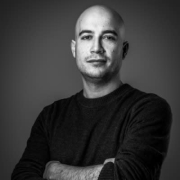

OpenText Core Application Security and CodeSonar compete in the application security analysis category. OpenText has the upper hand with broader application security services while CodeSonar excels in static analysis features.
Features: OpenText Core Application Security integrates well with SAST and DAST, effectively scans source code, and identifies vulnerabilities early in the development process. Its centralized management and efficient use for occasional testing needs are notable. CodeSonar is known for its speed and detailed analysis, particularly in detecting runtime errors and identifying dead code, alongside a precise user-friendly interface.
Room for Improvement: OpenText Core Application Security needs enhanced reporting and visual capabilities, support for more programming languages, and a reduction in false positives. Its pricing model and integration with incident management systems require attention, as do deployment speed and complexity reduction for developers. CodeSonar could benefit from better coding rules and better support for programming languages like AngularJS and Node.js. Also, improving its static analysis tool and offering more licensing flexibility might be advantageous.
Ease of Deployment and Customer Service: OpenText Core Application Security offers diverse deployment options, including on-premises, cloud, and hybrid environments, which is appealing for different organizational infrastructures. Its customer service is generally positive, though technical support responsiveness varies. CodeSonar is mainly available on-premises, limiting users seeking cloud options, and is praised for its knowledgeable and reliable customer service.
Pricing and ROI: OpenText Core Application Security is seen as expensive but justified by its capabilities. More flexible pricing could improve adoption. CodeSonar’s pricing might deter smaller teams but its unique features make it worth the investment, providing good ROI through risk reduction and seamless integration into existing workflows.
| Product | Market Share (%) |
|---|---|
| OpenText Core Application Security | 3.7% |
| CodeSonar | 1.4% |
| Other | 94.9% |


| Company Size | Count |
|---|---|
| Small Business | 5 |
| Midsize Enterprise | 1 |
| Large Enterprise | 2 |
| Company Size | Count |
|---|---|
| Small Business | 16 |
| Midsize Enterprise | 8 |
| Large Enterprise | 43 |
GrammaTech enables organizations to develop software applications more efficiently, on-budget, and on-schedule by helping to eliminate harmful defects that can cause system failures, enable data breaches, and ultimately increase corporate liabilities in today’s connected world. GrammaTech is the developer of CodeSonar, the most powerful source and binary code analysis solution available today. Extraordinarily precise, CodeSonar finds, on average, 2 times more serious defects in software than other static analysis solutions. Designed for organizations with zero tolerance for defects and vulnerabilities in their applications, CodeSonar provides static analysis for applications where reliability and security are paramount - widely used by software developers in avionics, medical, automotive, industrial control, and other mission-critical applications. Some of GrammaTech's customers include Toyota, GE, Hyundai, Kawasaki, LG, Lockheed Martin, NASA, Northrop Grumman, Panasonic, and Samsung.
OpenText Core Application Security offers robust features like static and dynamic scanning, real-time vulnerability tracking, and seamless integration with development platforms, designed to enhance code security and reduce operational costs.
OpenText Core Application Security is a cloud-based, on-demand service providing accurate and deep scanning capabilities with detailed reporting. Its integrations with development platforms ensure an enhanced security layer in the development lifecycle, benefiting users by lowering operational costs and facilitating efficient remediation. The platform addresses needs for intuitive interfaces, API support, and comprehensive vulnerability assessments, helping improve code security and accelerate time-to-market. Despite its strengths, challenges exist around false positives, report clarity, and language support, alongside confusing pricing and package options. Enhancements are sought in areas like CI/CD pipeline configuration, report visualization, scan times, and integration with third-party tools such as GitLab, container scanning, and software composition analysis.
What features define OpenText Core Application Security?Industries like mobile applications, e-commerce, and banking leverage OpenText Core Application Security for its ability to identify vulnerabilities such as SQL injections. Integrating seamlessly with DevSecOps and security auditing processes, this tool supports developers in writing safer code, ensuring secure application deployment and enhancing software assurance.
We monitor all Application Security Tools reviews to prevent fraudulent reviews and keep review quality high. We do not post reviews by company employees or direct competitors. We validate each review for authenticity via cross-reference with LinkedIn, and personal follow-up with the reviewer when necessary.